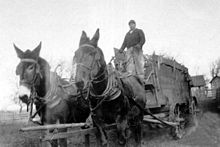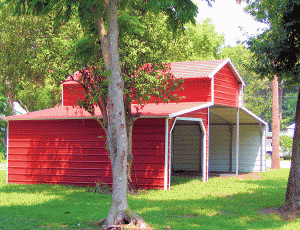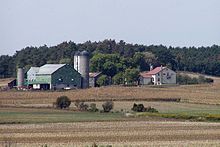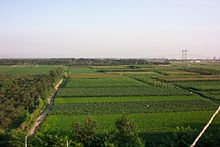Steel Buildings Barns Photo Gallery
Steel Buildings.
Etymology

A farmer harvesting crops with mule-drawn wagon, 1920s, Iowa, USA. The word in the sense of an agricultural land-holding derives from the verb “to farm” a revenue source, whether taxes, customs, rents of a group of manors or simply to hold an individual manor by the feudal land tenure of “fee farm”. The word is from the medieval Latin noun firma, also the source of the French word ferme, meaning a fixed agreement, contract, from the classical Latin adjective firmus meaning strong, stout, firm.As in the medieval age virtually all manors were engaged in the business of agriculture, which was their principal revenue source, so to hold a manor by the tenure of “fee farm” became synonymous with the practice of agriculture itself. At this time no steel buildings were built.
Farming Steel Buildings
Main article: Agriculture
Overhead irrigation, center pivot design. The term farming covers a wide spectrum of agricultural production work. At one end of this spectrum is the subsistence farmer, who farms a small area with limited resource inputs, and produces only enough food to meet the needs of his family. At the other end is commercial intensive agriculture, including industrial agriculture. Such farming involves large fields and/or numbers of animals, large resource inputs (pesticides, fertilizers, etc.), and a high level of mechanization. These operations generally attempt to maximize financial income from grain, produce, or livestock.
Traditionally, the goal of farming was to work collectively as a community to grow and harvest crops that could be grown in mass such as wheat, maize, squash, and other cash crops. Centuries later these same farmers took charge of livestock, and began growing food exclusively for the feeding of livestock as well

as for the community. With the growth of civilization the farmer’s focus changed from basic survival to that of financial gain. Steel Buildings were staring to enter farming. In smaller towns on the outset of civilization the farmer did retain the need to grow their own food, but the financially minded farmer was largely spreading. With the Renaissance came the plantation, a farm primarily worked by others primarily for the gain of the plantation’s owner. Then came a new age of industry and Steel Buildings where the farm could be staffed by fewer people and big machines. This meant a complete revolution for farming.
Types of farms
Farmlands in Hebei province, China
A business producing tree fruits or nuts is called an orchard; a vineyard produces grapes. The stable is used for operations principally involved in the training of horses. Stud and commercial farms breed and produce other animals and livestock. Steel Buildings for Barns were starting to be used A farm that is primarily used for the production of milk and dairy is a dairy farm. A market garden or truck farm is a farm that grows vegetables, but little or no grain. Additional specialty farms include fish farms, which raise fish in captivity as a food source, and tree farms, which grow trees for sale for transplant, lumber, or decorative use. A plantation is usually a large farm or estate, on which cotton, tobacco, coffee or sugar cane, are cultivated, often by resident laborers.














